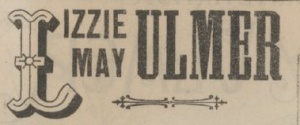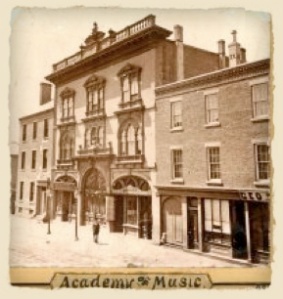The University of New Brunswick has a wonderful collection of memorabilia of the bygone theatre. Through their website I discovered a mention of William Nannary’s troupe including Lizzie May and George, performing in Halifax back in 1877. The piece that they performed on January 16,1877 was called The Clouds. At the time it was all the fashion for theatre troupes to perform ancient Greek plays.
The Clouds is an ancient Greek play by Aristophanes. According to theatrehistory.com , The Clouds was chiefly a general exhibition of the corrupt state of education at Athens, and of its causes; it was a loudly uttered protest on the part of Aristophanes against the useless and pernicious speculations of the sophists. The Clouds, themselves, who form the chorus, no doubt dressed fantastically enough, are an allegory on these metaphysical thoughts, which do not rest on the ground of experience, but hover about without definite form and substance, in the region of possibilities.
As there were no female roles in the play except for the clouds, I would hazard a guess that Lizzie May dressed in gauzy splendor was hung by a basket from the rafters and slowly lowered to the stage. Her stage direction would have been to look ethereal and light. With the over-emoting of the day I would certainly have loved to have seen that!
According to reviews the company put on an excellent performance and they opened to a packed house. The name G.T. Ulmer is merely mentioned as part of the troupe of players. Lizzie May however is singled out as a pretty ingenue and one of the best soubrettes in the troupe. Young, pretty actresses usually filled the role of soubrette who had a light soprano voice and a young coquettish attitude. A soubrette was flirty, and fun and connected well with audiences. I wonder how well George, a known ham, felt about his 22 year old wife getting more recognition than himself?

